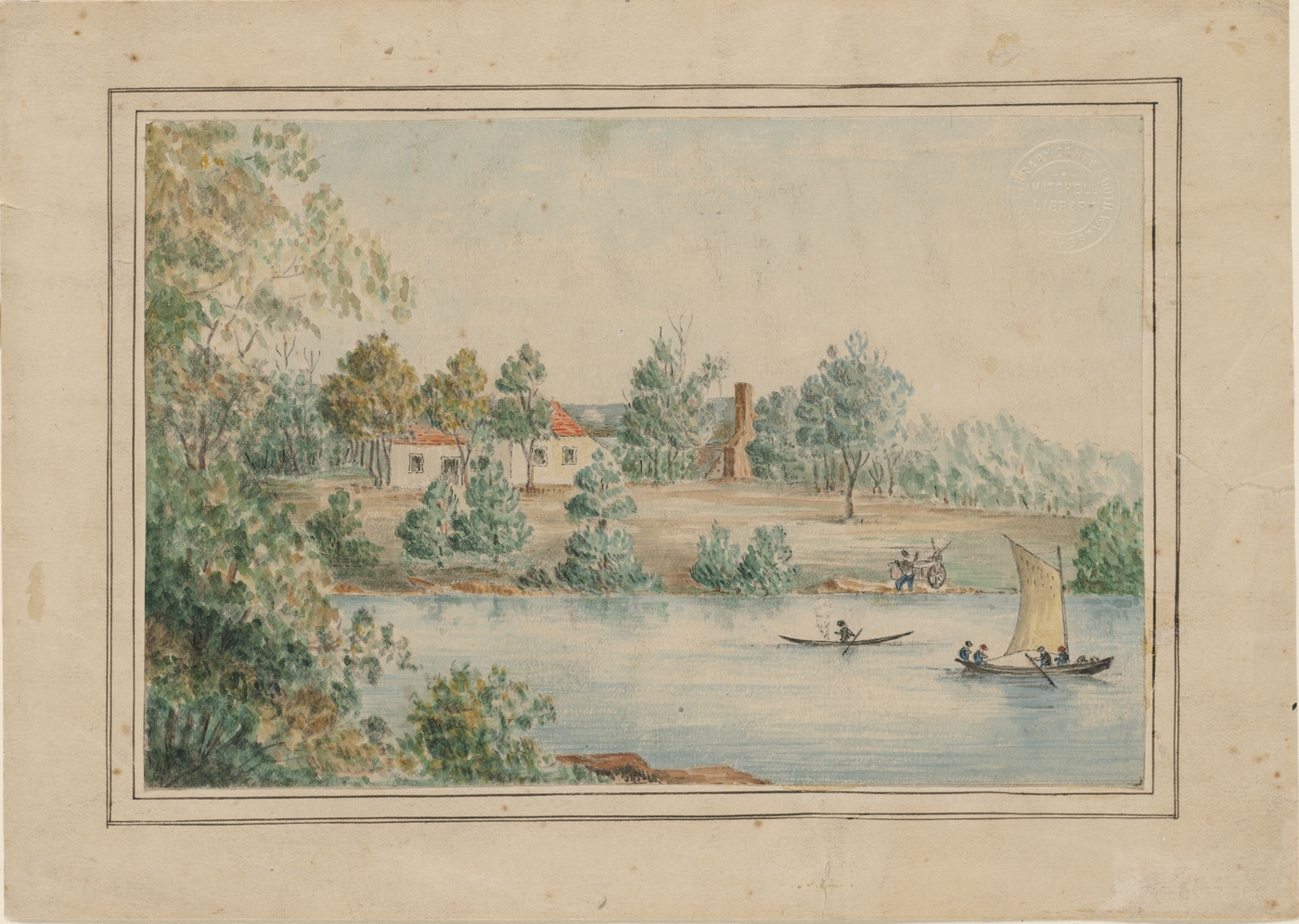The Dictionary of Sydney was archived in 2021.
Captain Waterhouse's house, Sidney [sic], the Vineyard, about 1798

From the collections of the
(Mitchell Library)

